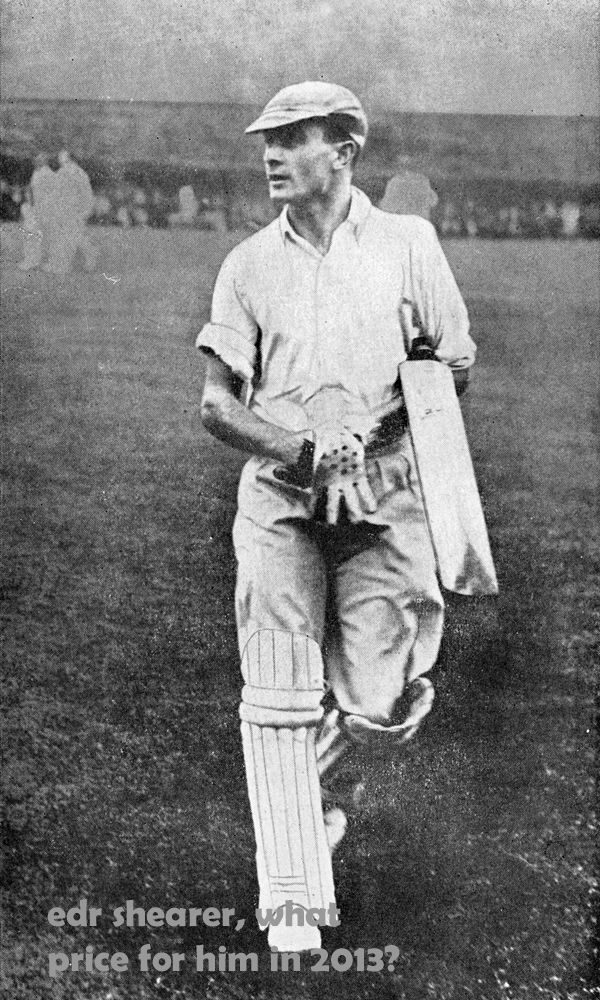
Mega clubs like Manchester United, Barcelona and Real Madrid are reputed to be the richest in the football world, but the ongoing saga at Old Trafford with the Glazier family raising huge loans against the club’s assets shows how fickle the wealth is measured. Arsenal win nothing these days, but their manager Arsene Wenger has ensured the club makes a healthy profit every year and one assumes he gets a well-earned bonus as a result. Wenger has a shrewd business brain, but the same could not be said for most of his peers, many of whom have been reckless spendthrifts.
Will local cricket go down the money drain in a similar fashion?
 Most Irish League Football Clubs and many of the leading rugby clubs are in debt. Dwindling crowds have removed gate receipts as the major source of revenue and without sponsorship most would be insolvent. Indeed, even with sponsorship many clubs are on the brink. International rugby players like Jonathan Sexton may fetch up to a million Euro on the French transfer market, but at club level the game struggles outside the big clubs down south. Many clubs are still run by devoted amateur members, but the business of running a successful sports club has long outlived this type of administration and could even destroy clubs.
Most Irish League Football Clubs and many of the leading rugby clubs are in debt. Dwindling crowds have removed gate receipts as the major source of revenue and without sponsorship most would be insolvent. Indeed, even with sponsorship many clubs are on the brink. International rugby players like Jonathan Sexton may fetch up to a million Euro on the French transfer market, but at club level the game struggles outside the big clubs down south. Many clubs are still run by devoted amateur members, but the business of running a successful sports club has long outlived this type of administration and could even destroy clubs.
Even golf clubs are feeling the pinch. Not so long ago most golf clubs had a waiting list and could boast solid revenue from green fees and membership fees. But times have changed and memberships are dropping due to tougher economic times. Clubs with high overdrafts are certainly feeling the pinch and may be forced to fold.
When professionalism came back into local cricket in 1978 it was not so difficult raising a few thousand pounds to pay an overseas professional if that was the way a club decided to go. However, roll on 35 years and a much different playing field has developed amongst the top clubs. Player movements have created a growing group of mercenaries prepared to move to better themselves with the highest bidder. In fairness to the players it is difficult to criticise anyone seeking to better themselves, but when you hear of cars and jobs being requested on top of salaries then we have to question where this is all going. The message seems to have got home to some clubs in the North-West where that wise old sage Lawrence Moore has recently stated some 80% of clubs are willing to stop the professional circus. If that is the case then this realism needs to be aired, although how anyone could police the exclusion of payments is a challenge beyond comprehension.
It is said some cricket clubs in Ireland are paying over 50,000 pounds a season to their players and although most of it comes from sponsorship, it is difficult to understand the logic. After all, there is no prize money for winning cups and gate receipts at most clubs are negligible. And who can remember who won the cup or the league ten years ago?
Have we reached the stage where amateur and professional clubs will go their separate ways? A model exists in local soccer where the Amateur League has been in existence for many years alongside the professional clubs. There have always been rumours of payments under the counter, but the league has remained essentially amateur. Professionals against Amateurs will always be an unfair duel, and if local cricket reaches the point where the amateurs feel there is no enjoyment in the imbalance then it could spark a divide in local cricket.
That would be a sad day.
Clarence Hiles
Editor








